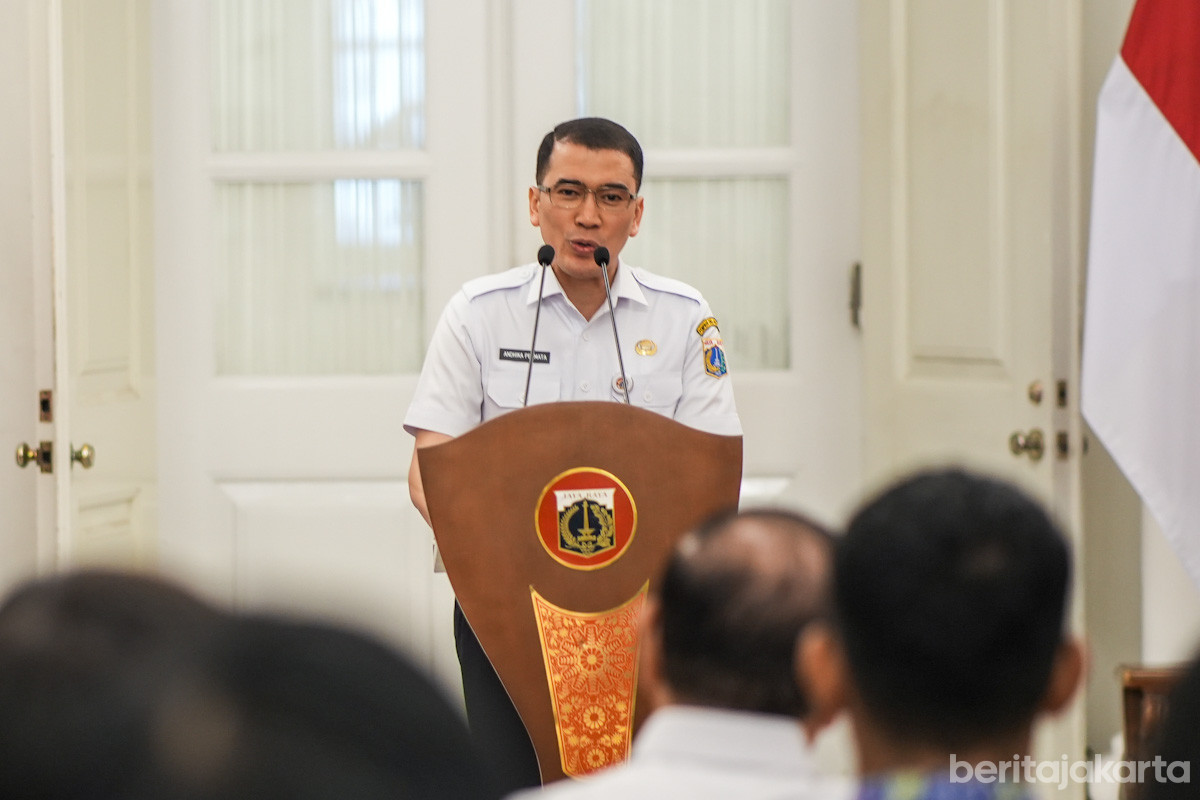

Wednesday, September 24th 2025 Reporter: Aldi Geri Lumban Tobing Translator: Rizky Mawardi 616

(Foto: Reza Pratama Putra)
The Jakarta Tourism and Creative Economy Agency announced that Jakarta's position in the A.T Kearney Global City Index (GCI) is currently ranked 74th out of 156 cities.
the right strategy is needed
This ranking demonstrates Jakarta's many strengths, but also areas for improvement. One of the biggest challenges lies in the Cultural Experience dimension, which encompasses the tourism sector.
Head of Jakarta Tourism and Creative Economy Agency, Andhika Permata said Jakarta's tourism, with all its immense potential, still needs to be improved to reach parity with other global cities. He is optimistic that this can be achieved.
"We have strong power, cultural richness, unique urban destinations, and most importantly, the passion and creativity of our young generation," he said, Wednesday (9/24).
According to him, optimizing tourism and the creative economy will transform Jakarta into a gateway for the global community to Indonesia and create new sources of economic growth.
He explained that there are three priority transformation policy directions to achieve this. First, the development of new leading tourist destinations such as urban tourism, heritage tourism, and coastal and island tourism.
Second, the development of the Meeting, Incentive, Convention, and Exhibition (MICE) industry, equipped with a variety of international-standard infrastructure. Third, the creation of a creative hub as an ecosystem for developing Jakarta's creative economy.
"The development of urban tourism in Jakarta is crucial, in keeping with the city's character. In 2022, a Governor's Decree was issued on Guidelines for Urban Tourism Implementation, encouraging the optimization of city-based tourism activities," he added.
Andhika explained that the concept for developing this area is based on the principle of placemaking, namely filling the area with various activities to create a quality space.
The priority areas are Kota Tua–Glodok, Merdeka, Cikini–Raden Saleh, Pasar Baru, Blok M–Senopati–Kebayoran Baru, as well as adaptive creative areas such as M-Bloc and Pos Bloc.
He stated that the 2024 Mobile Positioning Data (MPD) from the Tourism and Creative Economy Agency showed tourist movements in Jakarta was quite high. South Jakarta recorded over 25 million trips, Central Jakarta 17 million, East Jakarta 14 million, and North and West Jakarta each 13 million trips. Meanwhile, the Seribu Islands recorded over 182,000 trips.
"However, this data doesn't directly correlate with the low length of stay of tourists. In 2024, the Central Statistics Agency (BPS) recorded the average length of stay for foreign tourists at just 2 days, while domestic tourists at 1.53 days. This presents a significant challenge for all of us," he stated.
Furthermore, Jakarta's MICE industry holds significant potential. With 32 international flights to Soekarno-Hatta International Airport, 85 shopping malls, over 5,000 square meters of convention space, 6,493 restaurants, and 448 star-rated hotels with over 50,000 rooms, Jakarta is believed to be a key player in the tourism sector's economic growth.
Data from the Indonesian Exhibition Companies Association (ASPERAPI) shows that in 2024, there were 139 exhibitions held in Jakarta, and by 2025, this number increase to 149 events, with potential transactions exceeding Rp100 trillion per year. Jakarta also has the potential for special events, such as music and sports, which are increasingly attracting international tourists.
"Synergy between the government, businesses, and the community is crucial for Jakarta to truly emerge as a world-class tourism and creative economy hub. Of course, the right strategy is needed to achieve the desired impact," he emphasized.